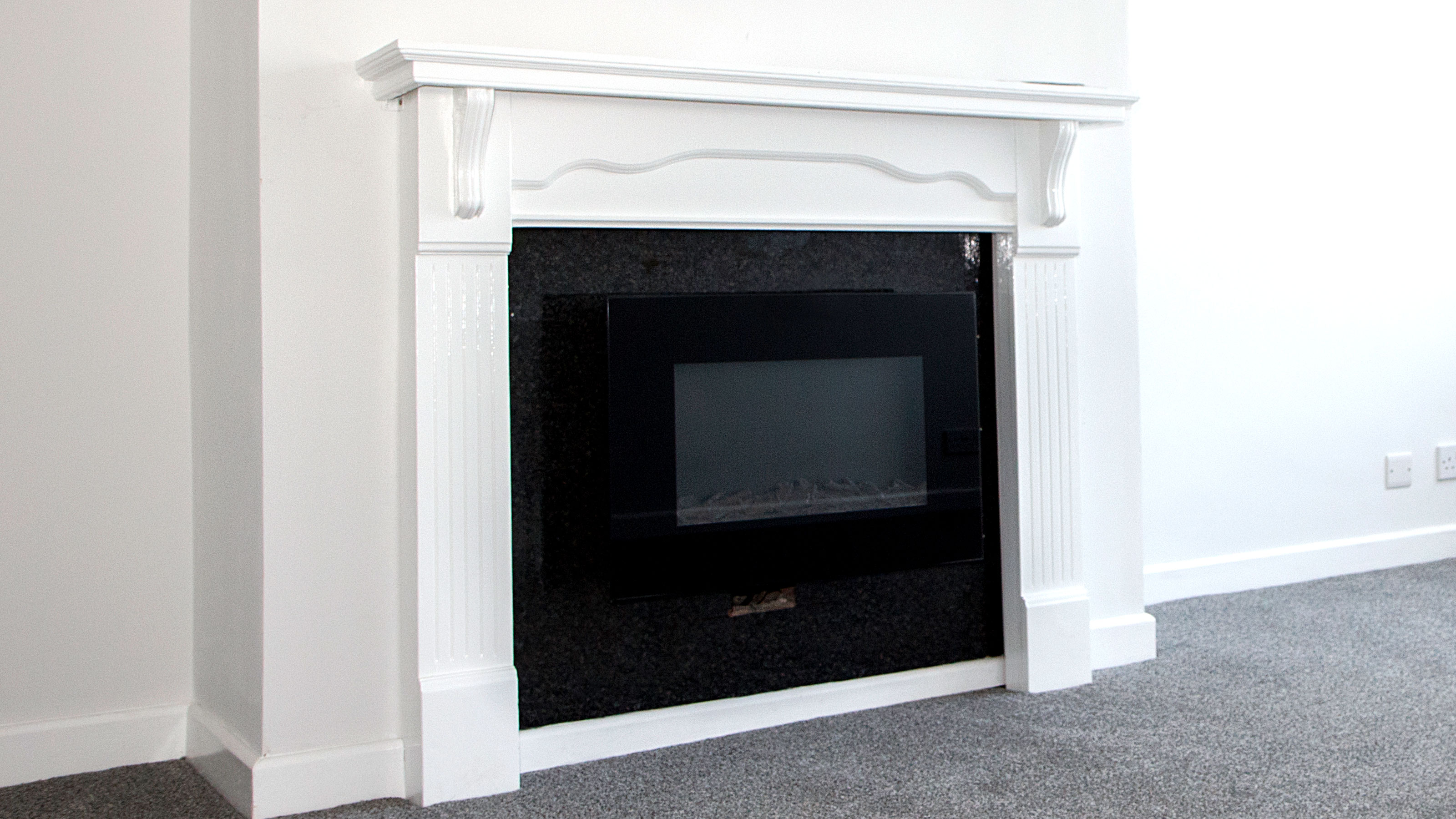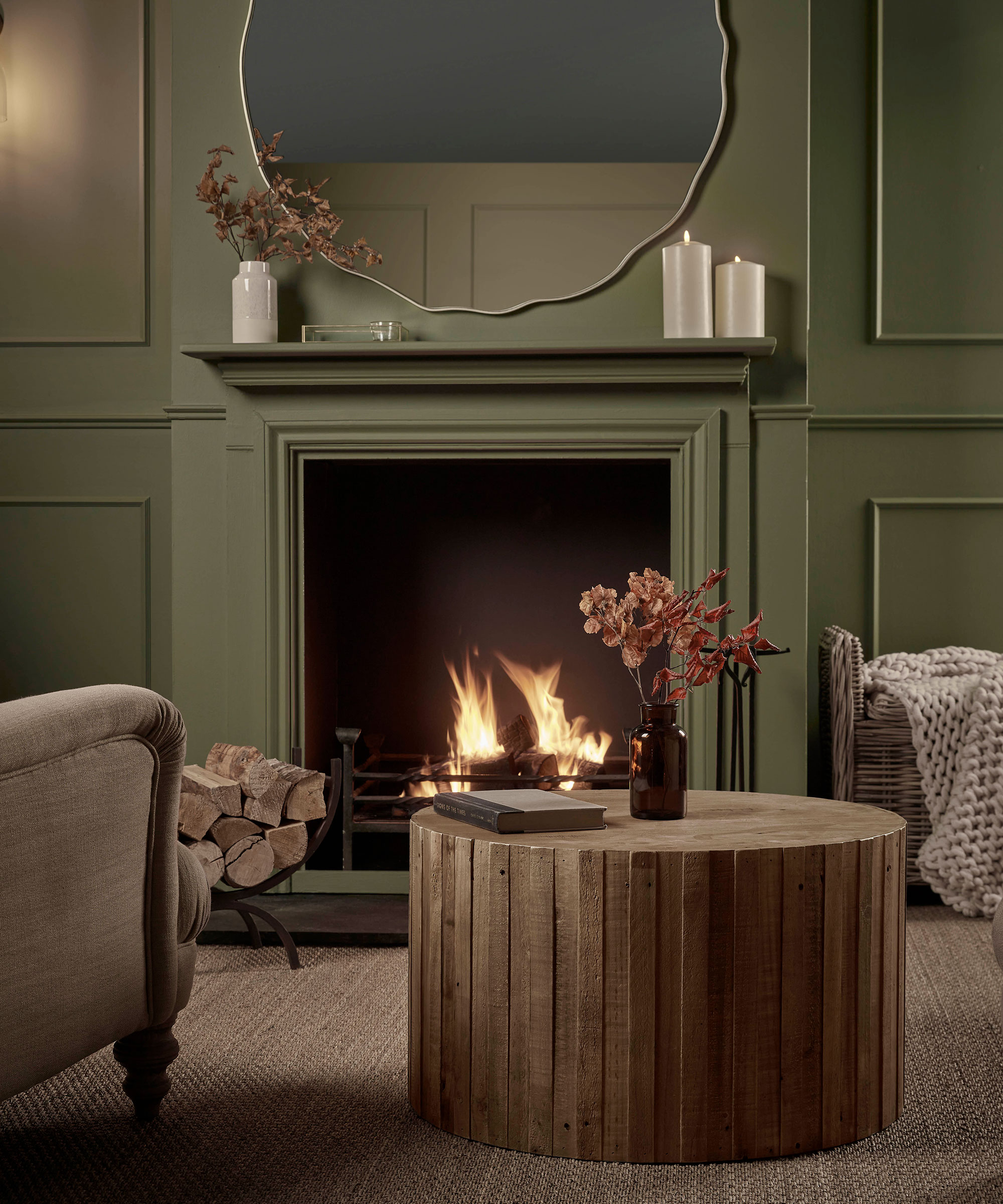How to paint a fireplace and transform your living space in 3 easy steps
Knowing the correct tools, paint and techniques for painting a fireplace will ensure you can successfully revamp your wooden and metal surrounds and give them a look that you’ll love

Want to rework the focal point of your living room? Then you need to know how to paint a fireplace for a quick and easy transformation. A fresh coat of paint can take an old and tired fireplace and make it look like new.
Or maybe it's time for a full room makeover and you want your fireplace to match your new decor.
Whatever the reason for revamping your fireplace ideas you need to make sure that you get your preparation right, choose the right paint and apply properly to make sure your fireplace looks good for years to come.
Step-by-step guide on how to paint a fireplace
Before you start make sure that you have sandpaper, painters or masking tape, paintbrushes, dust sheets – and paint of course – ready to go.
1. Prepare your work area
Cleaning and sanding a fireplace can make a lot of mess so make sure to clear the space around the area you are working in and lay down dust sheets. You can use painters tape, such as this ScotchBlue multi-surface masking tape from Amazon, to tape down the edges of the sheets to stop them moving.
Even if you're painting a brick fireplace rather than a wooden or cast-iron one, you'll still need to make sure you protect the surrounding area.
2. Prep the fireplace
If your fireplace has been painted previously your prep will depend on the condition of the paint. If it's in poor condition you will need to remove as much of the old paint as possible. If you want to go back to a bare surface and start from scratch use a heat gun to help remove the old paint.
Use a two or three inch paint scraper for flat surfaces and a shave hook like this Stanley Professional Comb Shave Hook from Amazon, to get into more intricate areas. Alternatively, use a wire scourer, a small wire brush or a drill attachment like this DazSpirit 9pcs Wire Brushes Set from Amazon.
To finish, use a 120-180 grit sandpaper to rub down the whole fireplace. If the paint is in decent condition, simply rub down. When finished, wipe down the fireplace with a damp cloth and leave to dry before painting. Shake out dust sheets outside or in a bin and finish with a vacuum to rid of any dust.
Now use painters tape to mask the edges of the fireplace so no paint gets on the walls. Also use painters tape and plastic dust sheets – cut or folded to size – to mask off any areas, such as a fire, to ensure they stay paint free.
3. Paint the fireplace
The first step is to apply a primer to create a base for the top coat. Start by doing the edges with a one or two inch paint brush to create a border and any intricate areas that can’t be painted with a roller. Start at the top of the fireplace and work your way down one side and then the other.
Then use a mini short pile or foam roller to paint the remaining areas and leave to dry as recommended. Ideally leave for at least 24 hours. To finish, follow the same process with the top coat. Again, allow to dry properly and add a second coat.

FAQs
What kind of paint do you use on a fireplace?
This depends on what you are painting. For example, if you have a wood surround that sits around a cast-iron fireplace, the heat will rarely reach the wood surround, so as long as the wood is prepared properly you can use a standard wood paint like this Dulux Quick Dry Satinwood from Amazon. Satin, semi-gloss or eggshell paints are more durable and wipeable than a matt paint. Don’t use emulsion as this isn’t as durable.
If you have a cast-iron fireplace you will need a paint that is suitable for metal like this Hammerite Metal Paint from Amazon. Try a matt black finish for an authentic look.
But if parts of your wood or metal fireplace is going to be exposed to higher than normal temperatures you should consider using a high heat paint like this RUSTINS Heat Resistant Black Paint from Amazon, or try Tikkurila Muuri, a heat resistant fireplace surround paint that offers a selection of colours.
Is it better to paint a fireplace with a brush or roller?
The surface of the fireplace will determine which is the best choice, but often it's a combination of the two. If you are painting a wooden fireplace surround, you’ll need a 1-2 inch brush and a mini roller. Use the brush to paint the edges and any cutting in jobs. Use the mini roller for the larger flat areas.
If you have a cast-iron fireplace that has a lot of intricate patterns you will need to use a half inch or one inch brush to make sure that you get into all areas and a larger brush for the larger areas.
If painting a brick fireplace you can use a three or four inch brush masonry brush like this ProDec Flat Masonry Paint Brush from Amazon. Make sure to work into the mortar lines, cracks and cover all areas. For the second coat you can use a brush and a roller – use a standard nine-inch roller with a thick pile for quicker coverage.
What is the best colour to paint a fireplace?
Choice, choices, choices – there are so many options to choose from. A popular choice is the classic white – or subtle shades of white. This fits well with any surrounding decor and brightens and lightens a room. If your surrounding walls are white it will blend into the room.
Alternatively, choose a contrasting colour. If your wall or chimney breast is a dark contemporary colour, paint it a light colour to emphasise the fireplace and provide a focal point for the room. If you have an old cast-iron fireplace try black to give it an authentic look or make a bold statement.
Can you paint a marble fireplace?
If you have a marble fireplace surround you want to update you first need to clean the marble. Sugar soap is a good choice for this task.
After cleaning the marble you can rub down for better adhesion, but this isn't entirely necessary as a good primer like Zinsser B-I-N Multi-surface Matt Primer from B&Q adheres well to the marble. This allows you to finish the fireplace with your suitable choice of paint.
Once your fireplace is painted, you can think about getting creative with your mantelpiece ideas or fireplace lighting to really elevate your scheme and draw attention to your newly painted feature.
Get the Homebuilding & Renovating Newsletter
Bring your dream home to life with expert advice, how to guides and design inspiration. Sign up for our newsletter and get two free tickets to a Homebuilding & Renovating Show near you.
Steve Jenkins is a freelance content creator with over two decades of experience working in digital and print and was previously the DIY content editor for Homebuilding & Renovating.
He is a keen DIYer with over 20 years of experience in transforming and renovating the many homes he has lived in. He specialises in painting and decorating, but has a wide range of skills gleaned from working in the building trade for around 10 years and spending time at night school learning how to plaster and plumb.
He has fitted kitchens, tiled bathrooms and kitchens, laid many floors, built partition walls, plastered walls, plumbed in bathrooms, worked on loft conversions and much more. And when he's not sure how to tackle a DIY project he has a wide network of friends – including plumbers, gas engineers, tilers, carpenters, painters and decorators, electricians and builders – in the trade to call upon.

